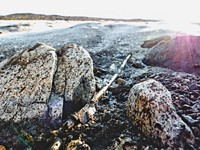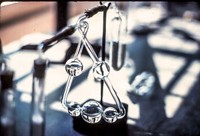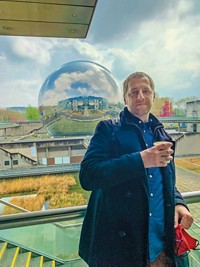Advertisement
Grab your lab coat. Let's get started
Welcome!
Welcome!
Create an account below to get 6 C&EN articles per month, receive newsletters and more - all free.
It seems this is your first time logging in online. Please enter the following information to continue.
As an ACS member you automatically get access to this site. All we need is few more details to create your reading experience.
Not you? Sign in with a different account.
Not you? Sign in with a different account.
ERROR 1
ERROR 1
ERROR 2
ERROR 2
ERROR 2
ERROR 2
ERROR 2
Password and Confirm password must match.
If you have an ACS member number, please enter it here so we can link this account to your membership. (optional)
ERROR 2
ACS values your privacy. By submitting your information, you are gaining access to C&EN and subscribing to our weekly newsletter. We use the information you provide to make your reading experience better, and we will never sell your data to third party members.
Education
Newscripts
An American chemist in Barcelona
by Craig Bettenhausen
June 25, 2023
| A version of this story appeared in
Volume 101, Issue 20

Catalan chemistry
Near the northeastern corner of Spain, Barcelona sits on the coast facing the Mediterranean Sea. The capital of Catalonia is famous for its seafood and architecture, but a long history as a center of trade and travel has also helped the city develop a robust scientific community. In addition to a selection of universities befitting an urban center with 4.6 million people, the area hosts a disproportionate share of the cosmetic and personal care industry in southern Europe and all the chemical production, distribution, and formulation that entails.

The two major science museums earn a natural place on the itinerary of any Barcelona tourist with a chemistry bent. The Museum of Natural Sciences of Barcelona traces a path from the origins of the universe through the first blips of life all the way to modern plants and animals. A massive display of preserved fungi forms the most impressive part of the collection and includes a pragmatic portion on edibility—the curators rated both shiitake mushrooms and corn smut as “edible, excellent.” The permanent collection skews toward micro- and macrobiology but ends with a generous and gorgeous display of gems, crystals, and minerals.
On the other side of town, CosmoCaxia is as much a scientific playground as it is a museum. A wealth of interactive demonstrations on chemistry and physics fills a stadium-sized space that bustles with children and adults manipulating ferrofluid, exploring electromagnetic spectra, and adjusting a particle-in-a-box simulation the size of a tour bus, among a hundred other activities and displays.

In an atrium near the entrance is the laboratory that chemist Antoni Ballester built in 1987 and 1988 as part of Spain’s scientific mission to Antarctica. At roughly 2 m tall and wide by 4 m long, the facility is compact but well appointed, with chromatographic and spectroscopic instruments and an analytical wet lab. Spanish researchers used Ballester’s setup until 2013, when it was replaced with newer equipment. Josefina Castellví, a marine microbiologist and former director of the mission, arranged to have the old lab shipped to Barcelona and donated to the museum.
Moving mercury

Barcelona’s Joan Miró Foundation is worth a visit for fans of the titular artist’s sparse, playful paintings and lush, chaotic fabric art. But the art museum is of special interest for chemists because it also holds Alexander Calder’s Mercury Fountain. At first approach, it’s not obvious that the liquid is quicksilver. But getting closer and letting one’s mind wrap around the piece, the metallic character of the liquid’s reflections reveal it to be flowing mercury. The fountain head shakes with the effort of the submerged pump to lift the dense metal more than a meter into the air.
The work honors the Spanish town of Almadén, which once supplied more than 60% of the world’s mercury from its mines. Fascist military forces led by Francisco Franco attacked the town in 1936 during the Spanish Civil War. In protest, the government commissioned Calder to create the fountain for the Spanish pavilion at the 1937 World’s Fair in Paris, where it was displayed next to Pablo Picasso’s Guernica. Both pieces denounce the brutality and destruction of the war, which Franco won in 1939.
Calder later gave the work to Joan Miró, a longtime friend. The artists’ original design allowed visitors to inspect the fountain up close, but safety concerns spurred the museum to put it behind glass. Probably for the best, as mercuric overspray can be seen throughout the enclosure, decorating the pink granite that surrounds the sculpture with silvery specks.

Please send comments and suggestions to newscripts@acs.org.





Join the conversation
Contact the reporter
Submit a Letter to the Editor for publication
Engage with us on Twitter